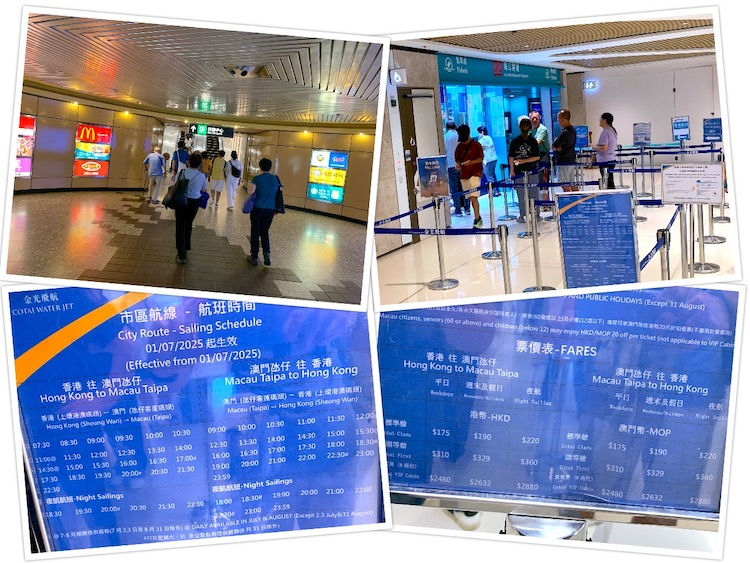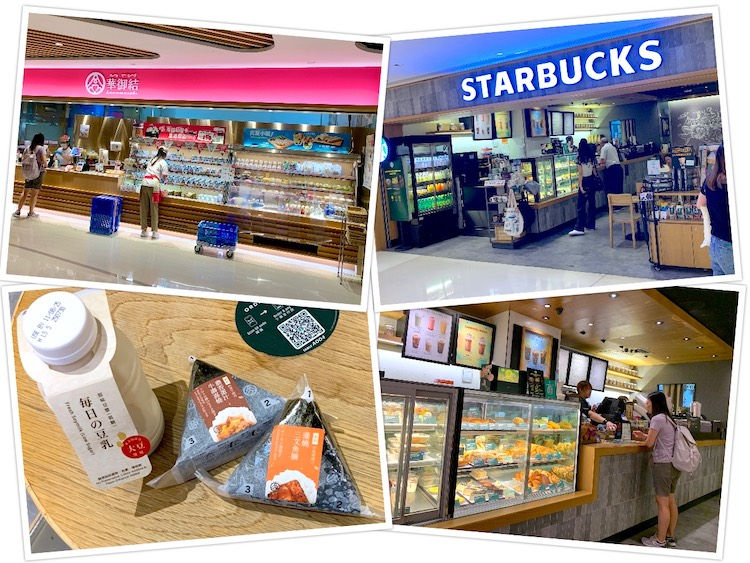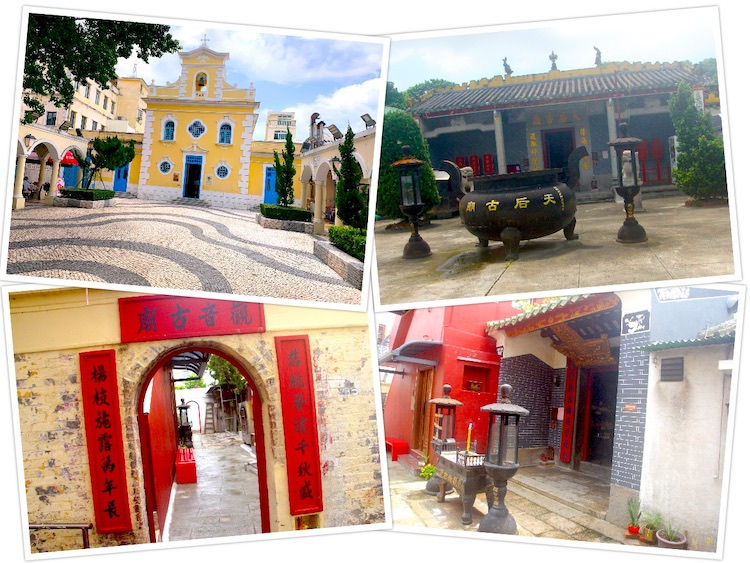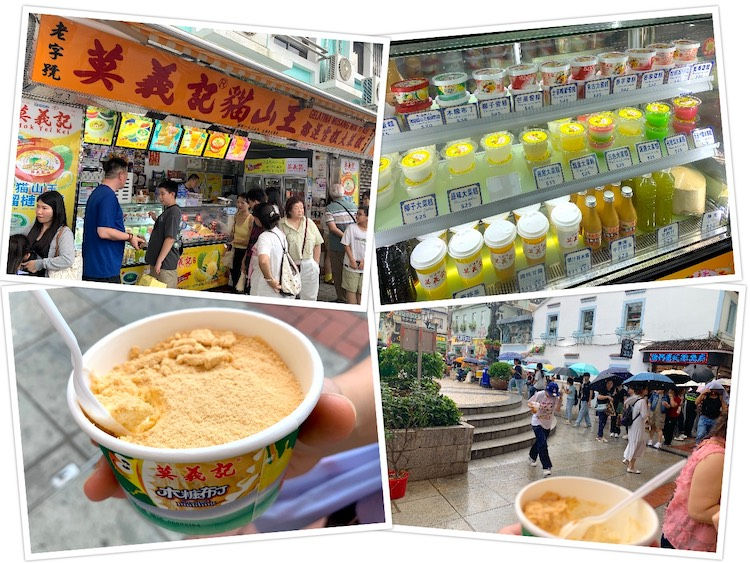Hong Kong 2025 Day 3-I: Ferry to Macau Taipa & Coloane (澳门一日游.上)
- Rick

- Aug 7
- 7 min read
Updated: Sep 26
7th August 2025, Thursday | 🌦
We would be visiting Macau this day since we had 7 days on this trip, albeit too long for Hong Kong alone. I had done a similar one-day trip to Macau from Hong Kong in 2008 and would like to visit it again after 17 years.
We left The CityView at 7am and took the MTR from Yau Ma Tei (油麻地) to Sheung Wan (上环) with a change of train at Central Station. Sheung Wan MTR Station was connected to Shun Tak Centre (信德中心), where the Hong Kong-Macau Ferry Terminal (港澳客轮码头) was located. We exited from the station into the basement of Shun Tak Centre and went up to the 3rd floor where the ticketing counter for Cotai Water Jet (金光飞航) was located — we would start the tour in Taipa. The queue was very short in the early morning.

Cotai Water Jet's ferry services to Taipa of Macau started at 7:30am and the next ferry was at 8:30am and half-hourly thereafter. We had missed the 7:30am ferry, and purchased 2 tickets (HK$175 / adult on weekday daytime) for the 8:30am service. We would need to enter the departure area, called East Bridge (东桥), about 20 minutes prior to the departure time. With around 30 minutes to spare, we went to find something for breakfast.
One level below, we came to Hanamusubi (华御结), a store selling a wide selection of Japanese rice balls or omusubi. We bought a set that comprised of 2 rice balls — a Grilled Salmon Belly (蒲烧三文鱼腩) and a Beef Sukiyaki with Melty Rich Egg Yolk (浓香蛋汁牛寿喜烧) — and a bottle of soya milk for a total of HK$43 (including HK$4 top-up for a premium item). We would eat them on the ferry. Then, we went to Starbucks for some coffee and waited until it was time to go.

8:05am, we entered the ferry terminal via East Bridge, went through immigration clearance using the automated gantries and came to the waiting area. At the gate, we showed our tickets and were assigned to two window seats on the starboard side.
Boarding of the Cotai Water Jet ferry began at 8:20am. I tried taking photos of the blue-coloured ferry but unable to get good photos due to limited distance and port equipment obstructing the view — I managed to get some nice photos of a departing ferry on Day 6. Shortly after seated, the ferry departed exactly at 8:30am and we munched on the omusubi. They were delicious. We had limited ourselves to just one rice ball each so as to reserve our stomachs for more eats in Macau.

The sea was calm under a cloudy sky with the sun beaming through openings here and there. It would probably take some time before it would rain. At 9:30am, the long Ponte Macau / Macau Bridge (澳门大桥) came into sight. It was a long cross-sea bridge between Macau Peninsula (澳门半岛) and Taipa (氹仔). Macau Taipa Ferry Terminal was just round the corner.
The ferry berthed and we alighted. Again, I was not able to take photos of the whole ferry. At 9:50am, we were through immigration and headed to the bus platform. Following the signs for Bus Service 26, we came to B-Lane (blue) and realised that it was for services heading towards Macau Peninsula. We backtracked and found A-Lane (yellow) for Service 26 to Vila de Coloane / Coloane Village (路环村). The bus came at 10:05am and we paid the fares (MOP6 / person) using HK$12 in coins — we did not exchange for Macanese Pataca (MOP) and would be using Hong Kong currency.

The bus journey to Coloane Village took just 20 minutes, dropping us at a roundabout. And Lord Stow’s Bakery (澳门安德鲁饼店) was near to the bus stop. The bakery had several outlets in Macau and this rustic-looking store was the original one — it had retained its old storefront and wooden furniture. The bakery was in the Michelin Guide for its original Portuguese egg tarts (pastéis de nata). We bought an egg tart (MOP11) and an Angel Cake with Orange (天使橙皮蛋糕, MOP8) to try. Both pastries tasted really good and no preservatives used, thus, it would be best to consume them within the day.

Lord Stow’s Bakery actually had two cafes in two adjacent buildings. We would not have time to try any of the cafes since we had quite a packed itinerary for the one-day trip.
Following a little road that led to the edge of the village, we came to Ponte Cais de Coloane / Coloane Pier (路环码头), which was used for transporting fishery by-products and other goods in Coloane. In the past, the pier was used to pick up / drop off passengers to Coloane Island — Cotai (derived from "Coloane-Taipa") was actually a reclaimed land that connected both Taipa and Coloane islands. From the pier, we could see Hengqin Island (横琴岛) of Zhuhai (珠海市) across the narrow channel.

Continuing on the road, we walked up and down a small hill, passing some abandoned shipyards, before coming to Hon Kee Cafe (汉记手打咖啡) in a queer shack. I had tried iced dalgona coffee in Johor Bahru before and learnt that the creator of that special beverage was in Macau, thus, I dragged my sister to the cafe to try the original version.
Hon Kee Cafe served both hot and cold hand-beaten coffee instead of just the iced version. Naturally, I had a hot Hand Beaten Sweet Coffee (手打咖啡, MOP22) and a Bun with Butter (奶油包, MOP16). The coffee was so much thicker and fuller-bodied than the milk coffees in Hong Kong.

Leaving the cafe, we headed back to the village the way we came. We did not realised that our exposed legs were bitten by mosquitoes until red swollen bumps appeared and got super itchy — my anti-itch ointment was not effective against them and it took nearly a week for the itchiness to go away.
We walked around Coloane Village, checking out some of the historical structures, which were mostly religious, such as the Chapel of St. Francis Xavier (圣方济各堂) — a familiar name with a Catholic church in Malacca — and its front yard looked like a mini version of Senado Square (议事亭前地); the Tam Kung Temple (谭公庙) at one end of the village; the Tin Hau Temple (天后古庙) on a low hill; and Kun Iam Temple (观音古庙) hidden in a narrow alley. The village was pretty quiet on this day — probably due to the hot weather.

12pm, we finished the village tour and walked back to the roundabout where we took Bus Service 26A at another bus stop to Pai Kok MLRT (Macau Light Rapid Transit) Station (排角站). The bus passed by the entrance to A-Ma Cultural Village (on a hill) and travelled through the Cotai Strip with series of majestic structures — these would have to wait till another visit, not on a short day-tour.
20 minutes later, we dropped off at Pai Kok Station but we were not taking the Macao LRT — yet. We made used of the overhead bridge of the station to cross the road to Vila de Taipa / Taipa Village (氹仔旧城区), an old town that had gathered many restaurants, cafes and shops — and a popular tourist spot.
Since it was lunch time, we headed straight to Tai Lei Loi Kei (大利來記), along Rua Correia da Silva (告利雅施利华街), to have lunch before exploring the little "village". The restaurant was nearly full-house but we were able to share a table with a guy who was about to finish his food. We ordered their famous Pork Chop Bun (驰名猪扒包, MOP40) and Beef Tendon & Brisket Noodle (秘制牛筋腩面, MOP45) with drinks.

After lunch, we walked around Taipa Village to checkout the rows of colourful shops that lined the streets. Nearly all the shops were of different architectures and designs. Like any tourist-popular old towns, it was rather crowded, especially along Rua do Cunha (官也街), the "food street" of Taipa. It was impossible to try all the nice food here on just one or two visits.

We also visited Pastelaria Koi Kei / Koi Kei Bakery (钜记饼家) along the food street. The shop was fully packed with visitors. After sampling some products, we bought 2 packs of Chewy Peanut Candies — one with white sesame seeds and the other with coconut shreds — and a box of handmade Almond Cookies with Whole Almonds as gifts for our parents. Both peanut candies and almond cookies were signature products of Koi Kei Bakery and very popular among visitors.

At the other end of the food street, we came across Gelatina Mok Yi Kei (莫义记), a dessert store well-known for its Musang King (猫山王) durian ice-cream and serradura pudding. We shared a Serradura Pudding (木糖布丁, MOP38), also known as sawdust pudding or Macau pudding. The sky darkened and started raining while we were digging at the pudding under the shelter of the store.

2:20pm, the rain was getting heavier and we had to cut short the exploration of Taipa Village. Anyway, we still had Macau Peninsula to cover — in Part 2 of the day trip.
We took a train from Pai Kok LRT Station (排角站) to Barra Station (妈阁站) for MOP16 for two. The LRT train travelled above ground for another 3 stations in Taipa before entering the enclosed lower deck of Ponte de Sai Van / Sai Van Bridge (西湾大桥) to cross the sea to Macau Peninsula. Barra Station was an underground station, that began operation in December 2023, and the only station to date along the new extension from the Taipa Line.

It took less than 20 minutes for the LRT to arrive at Barra Station. And we began the second part of the day-trip on Macau Peninsula, starting with the Historic Centre of Macau (澳门历史城区).
Day 3 | Part 2: Historic Centre of Macau & Return via HZMB (澳门一日游.下)



Comments